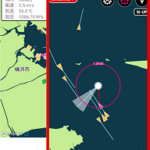(A Light Bright and Tiny: NIST Scientists Build a Better Nanoscale LED)
2020/8/14 アメリカ合衆国・国立標準技術研究所(NIST)

・ NIST、メリーランド大学、レンセラー工科大学および IBM トーマス・J・ワトソン研究所から成る研究チームが、サブミクロンサイズの発光ダイオード(LEDs)の新設計を開発し、明るさの大幅な向上に成功。
・ 同新 LED では、従来と同様の材料を利用しながら形状を変更。明るさの飛躍的な向上に加え、レーザー光の生成能力も確認。様々なアプリケーションで有用となる特性を達成した。
・ 長い間利用されている LED は、高輝度 LED のノーベル賞受賞を端緒に新時代へと移行。現在のLED は効率低下(efficiency droop)の現象による制限のため、多岐にわたるアプリケーションの可能性が妨げられている。
・ 本研究当初はラボ・オン・チップ技術のような微小なアプリケーション用の極微細 LED 開発を目標としていたが、新設計により効率低下の課題克服にもつながる結果が得られた。
・ 新設計の LED では、長さが約 5μm、幅が毛髪の 1/10 ほどの「フィン(ヒレ)」と称する亜鉛酸化物の薄片のアレイで光源を構築。同フィンアレイは、1cm 超の面積まで拡張可能な微小なコム(櫛)のような構造を有し、紫光線から紫外線の間の波長で、標準的なマイクロ LED の約 100~1,000 倍の明るさ(1μ㎡の標準的な LED では約 22nW のところ、新 LED では最大で 20μW)を達成。
・ また、フィンの新設計により、微細なレーザーとしての機能も可能。LED をレーザーに転換するための共振キャビティ(光を往復させてレーザー光を生成する)とのカップリングが不要。微細レーザーは、化学計測、次世代ポータブル通信機器、高解像度ディスプレイや菌等のチップスケールのアプリケーションで利用できる。
・ 本研究は、米国陸軍 Cooperative Research Agreement が一部支援した。
URL: https://www.nist.gov/news-events/news/2020/08/light-bright-and-tiny-nist-scientistsbuild-better-nanoscale-led
<NEDO海外技術情報より>
(関連情報)
Science Advances 掲載論文(フルテキスト)
High-brightness lasing at submicrometer enabled by droop-free fin light-emitting diodes (LEDs)
URL: https://advances.sciencemag.org/content/6/33/eaba4346
Abstract
“Efficiency droop,” i.e., a decline in brightness of light-emitting diodes (LEDs) at high electrical currents, limits the performance of all commercial LEDs and has limited the output power of submicrometer LEDs and lasers to nanowatts. We present a fin p-n junction LED pixel that eliminates efficiency droop, allowing LED brightness to increase linearly with current. With record current densities of 1000 kA/cm2, the LEDs transition to lasing, with brightness over 20 μW. Despite a light extraction efficiency of only 15%, these devices exceed the output power of any previous electrically driven submicrometer LED or laser pixel by 100 to 1000 times while showing comparable external quantum efficiencies. Modeling suggests that spreading of the electron-hole recombination region in fin LEDs at high injection levels suppresses the nonradiative Auger recombination processes. Further refinement of this design is expected to enable a new generation of high-brightness LED and laser pixels for macro- and microscale applications.



